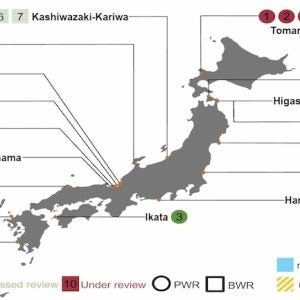Nokia has announced that PGE Systemy (IT and services subdivision of Polish energy company PGE) has chosen its 5G-ready, industrial-grade private wireless LTE network technology, following the successful trial of a 450 MHz PoC (proof of concept) network, which has been in operation since April 2019.
This “marks a critical first step in evaluating the use of the 450 MHz band to support the wide- area operations of energy distribution system operators across Poland”, says Nokia.
PGE Systemy will use the PoC infrastructure to further develop its concept of a country-wide critical communications network. The final private wireless network will potentially support 15 000-20 000 private radio users over LTE/4.9G, as well as wireless connectivity for up to 14 million smart meters and 35 000 existing and future SCADA (supervisory control and data acquisition) connections.
The Polish Energy Ministry has chosen PGE Systemy to operate a 4.9G private wireless network on the 450 MHz band for critical and operational communications in its next-generation power grid.
Chris Johnson, vice president of Nokia’s Enterprise business, said: “We are very pleased to be providing further support for the digitalisation of the Polish electrical grid by PGE Systemy. Nokia’s proof of concept, 5G-ready private network has ably demonstrated the superiority of cellular systems for mission-critical and machine- to-machine communications in these advanced applications.”
Nokia says it has deployed over 1300 mission critical networks in the transport, energy, large enterprise, manufacturing, webscale and public sector segments around the globe, noting that ”the Nokia Bell Labs Future X for industries architecture provides a framework for enterprises to accelerate their digitalisation and automation journey to Industry 4.0.”
Why 450 MHz?
Attracting increasing interest from energy sector players across Europe, the 450 MHz band has excellent propagation properties, generous power levels, and good availability of voice and data radios from a variety of equipment suppliers to support numerous applications, says Nokia. “It is the band of choice for the support of machine-to-machine communications in the energy sector”, the company says, “including smart meters and wireless SCADA connections required, for example, with wind turbines”, while “future applications of the network may include distributed energy resource management and other digital smart grid applications.”
According to Andrzej Piotrowski, vice president of PGE Systemy, “Private wireless operating in the 450 MHz range is the communications technology of choice for the energy sector right across Europe, which ensures support from industry suppliers. The Nokia proof of concept has demonstrated that it will meet our needs in terms of coverage, service quality, resilience and long-term availability.”
The four German transmission system operators have recently been making the case for allocation of 450 MHz LTE mobile radio bands to the energy industry. They argue that it is required to meet the challenge of integrating millions of new decentralised producers and consumers, eg, electric cars and heat pumps, into the grid, while at the same time maintaining network stability, noting that the emergency services already have usable LTE-capable frequency bands (eg, 700 MHz).
Meanwhile, in Ireland, ESB Networks has recently successfully bid 1.1 million euros for the award of rights to 2 x 4 MHz of radio spectrum in the 410 MHz band, aka Band 87 (410-414 MHz uplink/420-424 MHz downlink).
ESB Networks says the award of the 15 year licence, by the Irish regulator ComReg, will facilitate “transformation to a low carbon electricity system through smart technologies” and help it “deliver a more secure, reliable and sustainable electricity network.”
Pat Eccles, information systems and telecoms senior manager at ESB Networks observed that the transition to low carbon would “see electricity powering our cars and heating systems into the future”, with “advanced telecommunications networks and smart grid technologies” helping to “facilitate the increase in demand for clean electricity, enabling ESB Networks to manage and optimise energy use on the grid.”
“ESB Networks welcomes ComReg’s decision to reserve radio spectrum for smart grid”, he said.
A dedicated smart grid telecoms network forms part of the ESB Networks Innovation Strategy, which includes the following goals: decarbonisation of the electricity system; enhanced control and visibility of the electrical network; increased connection of renewables to the grid; electrification of heat and transport; a more flexible network; and faster fault resolution, with reduced outage durations.
Industry promotional body, the 450 MHz Alliance, describing itself as “a long-standing supporter of 410-430 MHz spectrum usage worldwide” also warmly welcomed the ComReg decision.






